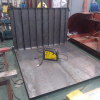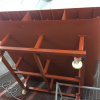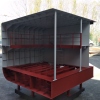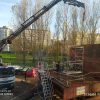The aim of Freeboard is to build a boat model using a block assembly process, in order to reproduce conditions that students will face in real work environments.
Freeboard Promotional Video
Target Audience
Students targeted in the construction of the block:
- Students from Medium Grade in Welding and Superior Grade of Metallic Construction: drawing, cutting, assembly, painting and surface finishing.
- Students from Superior Grade in Machining Manufacture Design: Designing and creating Construction and Assembly drawings.
- Students from Medium Grade in Machining: mechanical components manufacturing.
Professional Departments that can be involved in the School Centre after building the block:
- Machining manufacture department: Pipes, connections components, painting etc.
- Electronic and electricity department: Electrical system (wiring, electrical tubes, connections etc.), communications aerials and all kind of necessary devices.
- Energy and water department: Plumbing (pipes, valves, connectors) and solar heating energy components.
- Automotive department: Installation, assembly and starting up of engines.
- Installation and maintenance department: Electrical and mechanical maintenance of installation.
Layman Report
Learning Outcomes
Interested in running this course?
Some of the course training material is available to freely access below. If you would like to run this course or have queries please contact Raquel Rodriguez, XUNTA de Galicia (CFIP Ferrolterra), Spain (raquelrodriguezhernandez@gmail.com).
- Schematics of the hull: Access Schematics 1, Schematics 2, Schematics 3
Building by Block Assembly Process (or modular construction) is a common method of the shipbuilding sector. Freeboard aims to provide a naval work environment to improve practical learning methods for students, by building a real-scale part of a ship’s hull.
This hands-on training, under controlled plant conditions, will be carried out with the same materials and design standards as conventionally built facilities.
The block area will have two levels of approximately 40 m2 each. Two of the walls will be left open for accessibility and visualisation of ongoing tasks.
The main objectives are:
- Training of VET students in professional-orientated installations.
- Using block assembly process (which is not common in VET methodology).
- Enhancing and developing other professional skills such as:
-
- Creativity and innovative ideas, since difficulties and problems will appear during construction process.
- Decision-making skills, merging multidisciplinary knowledge and work, taking risks in order to be able to respond appropriately to unforeseen problems.
- Teamwork and leadership, due to working with several departments, classmates, etc.
- Create Health and Safety conditions: work at heights, fall arrest system, address with handling loads, working in confined spaces, etc.
Planning and design:
- Designing and defining technical specifications for the mechanical work.
- Understanding technical documentation, doing a state-of-the-art in order to identify materials required for the construction phase.
- Assessing costs of the project, using commercial and technical information, manufacturer’s invoices, etc., in order to be within the approved budget.
- Applying CAD working techniques for the design according to the rules of naval policies.
Construction and Assembly:
- Solving potential problems in assembly, using economical, safety and practical criteria.
- Assembling the structure, following drawings and performing the necessary tests, to monitor equipment and associated elements.
- Identifying standard components that can be used in the design of the block.
- Selecting tools and necessary equipment.
- Using the techniques to trace, cut, mechanise, weld etc. describing the operative sequence to cut and assemble the pieces.
Finishing and other objectives:
- Painting the block.
- Plumbing (pipes, valves, connectors) and other type components (electrical, heating etc.) can be installed once the structure is built.
After completion and fit-out, it is expected that all students from all the professional departments could carry out technical training on it.
- Level 3 to level 5
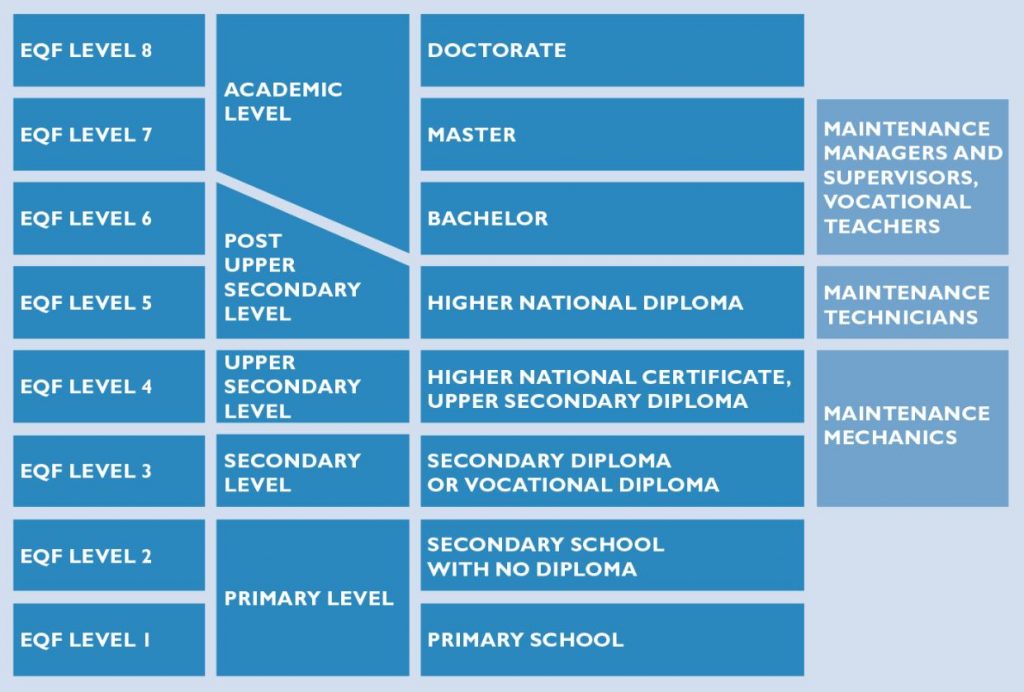
Figure 1: EQF levels compared with achieved education and maintenance personnel positions [1].
[1] Application of European Qualification Framework (EQF) in Maintenance. Magazine for maintenance & asset management professionals: maintworld.com
Time and Date
Freeboard was originally planned to be completed by September 2020. However recent events related to COVID-19 have provoked a considerable delay of the whole Pilot Experience by approximately six months.
Venue
Freeboard is developed and implemented in CIFP Ferrolterra, Rúa Ramón y Cajal, 15403 Ferrol, A Coruña, España
Course Instructors
- Coordinator: Fernando López González
- Teachers: David Sedes Doce, Roberto Santos González, Benito Chans Martínez, Vicente Cid Maceiras, Rebeca Valiño Regueiro, Daniel Ríos Fernández, Marta Pérez Durán, Raquel Rodríguez Hernández
Further information
Visit www.edu.xunta.gal/centros/cifpferrolterra/taxonomy/term/309
Promotion
- Roll-up banner
- Freeboard in the news:
The MATES Strategy Baseline report consists of results which were obtained from the extensive work carried out by the MATES partners; workshops with experts, Delphi questionnaires, desk-top studies and surveys. This report synthesises the MATES strategy baseline to bridge the skills gap between training offers and the industry demands in the Maritime Technologies value chain. The full report can be accessed here. Below are the Lines of Actions identified in the report (see pages 17 and 18) which Freeboard will address (SB = shipbuilding):
- SB1: Digital and data driven technologies
- SB5: Better matching of training to current needs in technical disciplines
- SB6: 21st century skills within the training offer
- SB7: Ocean literacy
- SB8: Promoting women
- SB10: Health and safety


























